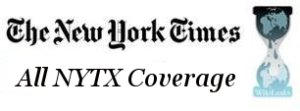ART/STYLE/TRAVEL » GENEVA DATELINE
The Wild Boars of Wall Street
January 31, 2014 · 0 Comments

By Matthew Stevenson:
“No matter what they’re charging to get in, it’s worth more to get out.”
—Roger Ebert
For a project that remains a figment of a director’s imagination, I was asked to watch a bunch of Wall Street movies during the holidays. In between Christmas and the new year, I took in “Margin Call,” “The Wolf of Wall Street,” and “The Insider,” and came to the conclusion that Virginia’s speculations about Santa Claus have a better grounding in reality that any of Hollywood’s insights into the financial world.
Having worked in finance for more than twenty-five years, I approached the films thinking I might glimpse moments of verisimilitude. Watching them, would I remember the tension of a board presentation or the frustrations in dealing with HR?
Instead I left the films astonished that, despite the plot lines, they could evoke so little of the business world. In many scenes, I felt like I was watching something that might be called Wall Street porn—a stylized world of strippers, hookers, and brokers brought together in the interest of defrauding clients for pleasure, but devoid of the emotions that go into most business days.
I had been led to believe that I would be screening some of the best movies about finance and Wall Street, which might capture, in some small way, part of my own business career.
Instead I was a child again, watching cartoons in my pajamas on a Saturday morning. The cinematic quality was better than Popeye’s, but in all the trading and board rooms I could still make out Rocky, Bullwinkle, Boris Badenov and Natasha Fatale, although this time they are unwinding a leveraged buyout.
* * *
That, in a way, is the message of J. C. Chandor’s “Margin Call,” which does a great deal to humanize the authors — and beneficiaries — of the 2008 financial crisis. But the film, relentless in its honesty and shrewd in its insights and techniques, is unlikely to soothe the wounded pride of the actual or aspiring ruling class. It is a tale of greed, vanity, myopia and expediency that is all the more damning for its refusal to moralize.
—A.O. Scott, New York Times
In case you missed it, “Margin Call” stars Jeremy Irons (as an evil CEO), Demi Moore (the moral conscience of compliance), and wheeler-dealer Kevin Spacey, who, in between a few drinks at a strip club and some glances at a computer screen, figures out that the company’s portfolio, if not the world economy, is toast.
Looking like Dracula in a corner suite, the pale-faced Irons choppers into the board room during the night and asks Demi to “take a look at the numbers.” When, before sunrise, she confirms Spacey’s hunch that the bond world as we know it is doomed, Irons fires her and asks the good-solider Spacey to dump the underwater paper on unsuspecting clients.
Although Kevin has been handling root canal for Irons’ Dracula for about thirty years, he has a moment of conscience over the sell order, refuses to carry it out, and devotes the rest of the film to his dying dog, which he eventually buries in his ex-wife’s front yard. (Yet another Wall Street metaphor, I guess, but a little lost on me.)
Meanwhile, Irons offers everyone on the crowded but exuberant trading floor $2.8 million if they can dump the worthless bonds in a day, which they do. (Hollywood trading floors have the feel of studio audiences from “Let’s Make a Deal.”)
The film ends with Irons drinking the blood of Christ—okay, a vintage Bordeaux—in the corporate dining room overlooking the Manhattan skyline, indifferent to the fate of the innocent purchasers. Hidden message: In the financial crisis Goldman Sachs served the same sacramental wine.
* * *
Does “The Wolf of Wall Street” condemn or celebrate? Is it meant to provoke disgust or envy? These may be, in the present phase of American civilization, distinctions without a meaningful difference behind them. If you walk away feeling empty and demoralized, worn down by the tackiness and aggression of the spectacle you have just witnessed, perhaps you truly appreciate the film’s critical ambitions. If, on the other hand, you ride out of the theater on a surge of adrenaline, intoxicated by its visual delights and visceral thrills, it’s possible you missed the point. The reverse could also be true. To quote another one of Mr. Scorsese’s magnetic, monstrous heroes, Jack LaMotta, that’s entertainment.
—A.O. Scott, New York Times
“Margin Call” might be a Harvard case study on business ethics, however, compared with Martin Scorsese’s “The Wolf of Wall Street,” starring Leonardo DiCaprio as Jordan Belfort, who leverages a Long Island penny stock bucket shop into a whirlwind life of yachts, mansions, strippers, and lines of hookers and cocaine (which are sometimes bundled together in convertible swaps).
Despite conning his clients, wives, colleagues, friends, family, and the FBI, Scorsese’s DiCaprio-Belfort remains a lovable Wall Street rat packer, at the center of a financial Animal House that, while attending to toga parties in Vegas or orgies with stewardesses, somehow makes enough of a market in illiquid stocks to keep the line dance going.
Perhaps the worst indulgence of the movie is that it drones on for almost three hours, in case the viewers haven’t (in the first 120 minutes of nymph cavorting) caught on to Scorsese’s subtle thesis that most people on Wall Street are con men short on morals and long on midget-tossing.
Above this Mardi Gras, the dapper Lion of Capri floats (sometimes in a gyrating helicopter) with his own set of priorities, most of which involve the search for the perfect Quaalude or office companions whose idea of casual-dress Friday is reduced to a few tassels. Message: It might be safer to deal with your broker over the phone.
Now comes the news that some brokerage firms are renting out entire theaters to throw their staff and clients to the wolves. I am not sure of the message conveyed by such bacchanal gatherings, although they somewhat distant from that relayed in the Smith Barney advertisement: “We make money the old fashioned way—we earn it.”
Working in finance and wanting your customers and colleagues to share in Scorsese’s belabored jokes, however, does remind me of a friend who in the bad old days of New York City—before $12 latte—who saw a lady of the streets and her client in Tompkins Square Park, as Jordan Belfort might say, closing a transaction. It was in broad daylight although on a rainy day, and fortunately for discretion and shelter, the client was holding an umbrella, which read: “Thank you Paine Webber.”
* * *
Mr. Mann has directed ”The Insider” with a pulse-quickening panache that heightens the tensions within its story. In describing Mr. Wigand’s progress from a staid corporate existence into a risky and unpredictable one, the film entails both visual and moral vertigo. Once Hollywood had a favorite folk tale: that the lone truth teller battling political or corporate evil would triumph, however bitterly, when the facts became known. But in the chillingly contemporary world of ”The Insider” it’s not that simple. Almost every character in the story is compromised by business considerations. And in the film’s vision of television news reporting, moral relativism is a big part of playing the game.
The gist of this movie, which begins in a mood of calm reflection and grows angrier and more incredulous as it goes on, is unmistakably punitive. The density of information and the complexity of the subject matter make “Inside Job” feel like a classroom lecture at times, but by the end Mr. Ferguson has summoned the scourging moral force of a pulpit-shaking sermon. That he delivers it with rigor, restraint and good humor makes his case all the more devastating.
—Janet Maslin, New York Times
Although not technically about Wall Street, “The Insider” is set around the story of how the business side of CBS tried to keep a tobacco whistle-blower (played by Russell Crowe) from appearing on “60 Minutes.”
Al Pacino plays the crusading Mike Wallace producer, and the heavies are Big Tobacco executives, who lie to Congress about the health effects of cigarettes (only Congress would believe them) and pressure CBS to keep Crowe’s testimony off the air.
Despite intimidation and death threats, eventually Pacino and Crowe triumph over the forces of nicotine darkness, and the last scenes show Crowe on “60 Minutes,” breaking the news that even though “more doctors smoke Camels than any other cigarette,” they will still probably kill you. Message: If it’s on TV it has to be true.
Released in 1999, the movie shows how far we have come in the evolution of whistle-blowing as a national pastime. I guess then the practice could merit such a pompous portrayal—less so now, alas, with more whistle-blowers than board members in corporate America.
If anything, the film is a case study on market forces, as “60 Minutes” has become more a game show than a high priest of Truth. Instead of a morality tale about corporate evil, “The Insider” can be seen as a cautionary tale about how hard it is to predict the future from Hollywood’s version of agitation propaganda. For example, television news divisions are in a death spiral while the tobacco companies continue to cash profits.
Too bad the real Wall Street will never get into the movies. It’s a lot more interesting than anything imagined by the directors of Leonardo DiCaprio or Kevin Spacey. In my experience, the wolves wore pinstripes and they used white shoe law firms to toss around their midgets.
Matthew Stevenson, a contributing editor of Harper’s Magazine, is the author of “Remembering the Twentieth Century Limited,” a collection of historical travel essays. His new book, Whistle-Stopping America, was recently published.
By admin









